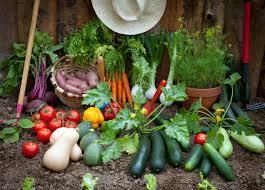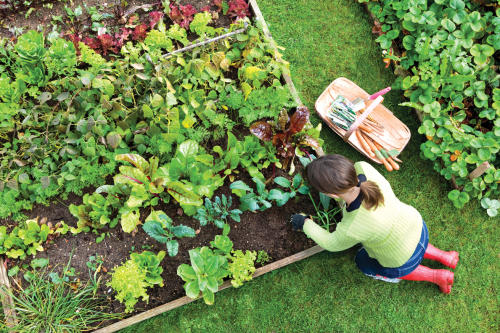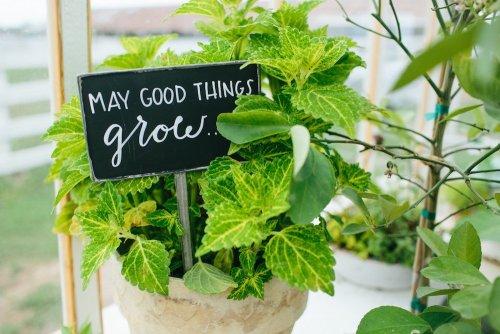Lush, Beautiful, and Edible

If you are asking yourself: why? Here are six reasons you should build your own vegetable garden.
First, you have total control over what you grow; this means you decide what fertilizer, pest control and water you want to use.
Second, you can ensure the freshness of your own vegetables as you know when you picked them.
Third, it's a great way to add life and colour to your garden to make it beautiful and lush.
Fourth, you will save money by lowering your grocery bill. Buying vegetables at the shops is way more expensive than growing your own.
Fifth, it's a great way to get the whole family involved in a wonderful activity. If you have kids, it will become an exciting hobby they will enjoy.
And lastly, reason number six: everyone needs some extra vitamin D, and exposing your skin to the sunlight (in moderation, mind you!) is great for your health!
If you stay in a flat or complex and don't have access to a large piece of land, you can buy or build a container or even use a hanging vegetable garden to get your veggies growing. You can even plant your veggies in pots and place them on your balcony. Before you do anything, it is important to find out which vegetables will grow and flourish in your area or region.
1. Choose your vegetables.You need to decide what plants you want to grow. Choose vegetables you love to eat and add to  your food. An important tip! Choose vegetables that have similar growing and soil conditions, this will make it easier to care for your vegetable garden, especially if you are a beginner.
your food. An important tip! Choose vegetables that have similar growing and soil conditions, this will make it easier to care for your vegetable garden, especially if you are a beginner.
2. Choose your area. Make sure it's a leveled out piece of land that's big enough and receives a good amount of sunshine. Also make sure the soil is without roots or rocks. Use a shovel or spade to remove any grass that still exists.
3. Dig up the soil. This loosens the ground, removes any clumps and also allows air and water to circulate more freely in the soil. It is very important to add at least a 5cm thick layer of compost and mix it in well. As a bonus, add some well-aged manure or topsoil too. It's a good idea to check the PH of your soil as well. If you find that it is not ideal for a vegetable garden, you can easily fix this by mixing a small amount of lime or gypsum into the soil. This can be purchased at any local nursery.
 4. Layout. Plant your vegetables from north to south, starting with the tallest to the shortest to prevent unnecessary shade as the veggies grow. Also look at how much space each veggie type will need, as different vegetables require different amount of space to grow. If your vegetable patch is bigger than 1.2 square meters, make sure you include little paths between your rows to allow you to access your plants without damaging them.
4. Layout. Plant your vegetables from north to south, starting with the tallest to the shortest to prevent unnecessary shade as the veggies grow. Also look at how much space each veggie type will need, as different vegetables require different amount of space to grow. If your vegetable patch is bigger than 1.2 square meters, make sure you include little paths between your rows to allow you to access your plants without damaging them.
5. Plant your seeds. Follow the instructions on the seed packet. It is important to water frequently as seeds need to be damp in order to sprout. Tip! Avoid watering at night. If the water sits all night without evaporating or getting absorbed, the young plants could be assailed by fungus.
6. Remove weeds. Also, when the plants start to grow vegetables, consider adding a fence to prevent any animals such as rabbits or squirrels from eating them. This is also a great idea if you have pets or very curious toddlers.
Care for each type of vegetable according to their needs. Give them as much water, fertilizer and pruning as they need. Continue weeding and when it's time to harvest, pick only the ripest ones first to allow the others more time to grow.

Keep it simple and involve your family. One extra thing you can do is put up little vegetable name boards. You can buy these or make them yourself. If you are feeling creative and want to use your DIY skills, get some cheap pieces of wood at your local hardware store and some chalk paint. Paint your wooden boards with the chalk paint, leaving some raw wood to show through. Glue long, flat pieces of wood to the back, making sure the structure is sturdy as you need to stick your board into the ground and you want it to be long lasting. Buy some chalk and write the names of your various veggies, then watch them grow!